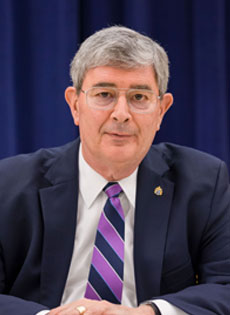
Why Vatican II was necessary
Monday, October 24, 2022
*George Weigel
Writing my new book, To Sanctify the World: The Vital Legacy of Vatican II (Basic Books), afforded me the welcome opportunity to dig into the Council’s 16 texts and the many fine commentaries on them. It also made me ponder why the Council was necessary. That question is often raised today by young Catholics who, unsettled by the excessive ecclesiastical air turbulence over the past decade and generally ill-informed about the pre-conciliar Church, imagine that everything in Catholicism was copacetic until John XXIII made the fatal mistake of summoning an ecumenical council. That, however, was not the view of some quite orthodox Catholic leaders in the decade before Vatican II.
Msgr. Giuseppe De Luca was a stalwart churchman who had drafted the Holy Office decree placing the books of 1947 Nobel Prize-winner André Gide on the Index of Forbidden Books. In 1953, however, he found the atmosphere in the Holy Office, the Suprema among curial offices, insufferable. So he vented his frustrations to Msgr. Giovanni Battista Montini (the future Pope Paul VI) in these no-nonsense terms: “In this suffocating atmosphere of unctuous and arrogant imbecility, perhaps a scream — chaotic but Christian — would do some good.”
Then there was the Swiss polymath-theologian Hans Urs von Balthasar. In 1952, he published a small book in German, Razing the Bastions: On the Church in This Age, in which he worried that the great Catholic tradition had become fossilized and had “slipped out of the [Church’s] living center of holiness.” The “great salvage operation” of the Counter-Reformation had been necessary, Balthasar argued, but it was over, and the Church had to get out of its defensive crouch and get on with offering humanity the truth of God in Christ.
In the years immediately after the Council, Joseph Ratzinger (the future Pope Benedict XVI), who was one of the three most influential theologians at Vatican II, knew that the Council’s reception was imperfect and its implementation even more imperfect. Nonetheless, he identified further reasons why Vatican II was necessary and why its teaching was essential for the Church’s life going forward:
“[The] Council reinserted into the Church as a whole a doctrine of [papal] primacy that was dangerously isolated; it integrated into the one mysterium of the Body of Christ a too-isolated conception of the hierarchy; it restored to the ordered unity of faith an isolated Mariology; it gave the biblical word its full due; it made the liturgy once more accessible; and, in addition, it made a courageous step forward toward the unity of all Christians.”
Thus the Council had many theological and doctrinal accomplishments to its credit. These were crucial to rekindling that radical, Christ-centered faith that would be the source of a revitalized Catholic mission to convert the modern world. Similarly, the Council’s rejection of Catholic triumphalism was good in itself and necessary for its mission: “It was both necessary and good for the Council to put an end to the false forms of the Church’s glorification of self on earth, and by suppressing her compulsive tendency to defend her past history, to eliminate her false justification of self.”
That having been done, however, Ratzinger believed that continual, obsessive self-flagellation put another obstacle in the path of evangelization and mission. Unlocking the promise of the Second Vatican Council meant renewing our faith in the Lord’s pledge “to be with you always” (Matthew 28:20). So, the future pope concluded, “it is time ... to reawaken our joy in the reality of an unbroken community of faith in Jesus Christ. We must rediscover that luminous trail that is the history of the saints and of the beautiful — a history in which the joy of the Gospel has been irrefutably expressed throughout the centuries.”
That reference to “the saints and the beautiful” helps us understand another reason why Vatican II was necessary. The Church’s pre-conciliar proclamation and apologetics were strong on logic. But a world become irreligious — not pagan, for paganism had a sense of this world’s englobement in a greater reality, but irreligious, tone-deaf to rumors of angels — was not, in the main, going to be converted by logical demonstrations. It would be converted by holiness, manifest in the lives of those who had become friends of the Lord Jesus Christ and joined themselves to his cause. It would be converted by the Church offering more beauty than the world could manage to create.
Where Catholicism is alive today, and Vatican II well-received and implemented, it is because local Churches have embraced holiness and beauty as evangelical and catechetical pathways toward a Christocentric future.


Comments from readers